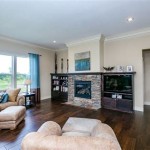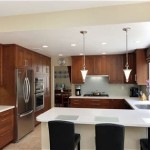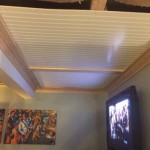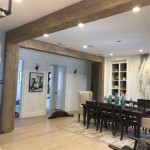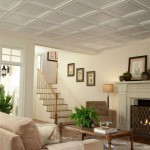What Are Coffered Ceiling Designs Used For in Construction?
Coffered ceilings are a type of architectural design element that involves creating a series of recessed panels, or coffers, in a ceiling surface. These panels can be square, rectangular, or even octagonal, and are often framed by decorative moldings or beams. While primarily decorative, coffered ceilings also serve several practical purposes in construction.
Aesthetic Appeal and Enhanced Ambiance
Coffered ceilings are a powerful tool for enhancing the visual appeal of a space. The recessed panels add depth and dimension to a room, creating a sense of grandeur and sophistication. The intricate patterns and decorative elements further enhance the overall aesthetic, making coffered ceilings a popular choice for both traditional and contemporary design styles.
Beyond visual appeal, coffered ceilings contribute to a more balanced and comfortable ambiance. The recessed panels create a sense of intimacy and coziness, making the room feel more inviting and welcoming. The visual interest provided by the coffered design also helps to draw the eye upwards, creating a sense of spaciousness and height.
Improved Acoustics and Sound Control
Coffered ceilings can contribute to better acoustics within a room. The recessed panels act as sound absorbers, reducing reverberation and echo. This is particularly beneficial in spaces where clear acoustics are important, such as concert halls, lecture theaters, and recording studios.
The sound-absorbing properties of coffered ceilings also make them ideal for residential spaces, particularly in areas where noise levels tend to be higher, such as living rooms, dining rooms, and kitchens. The reduced noise levels create a more peaceful and relaxing environment, improving the overall comfort and functionality of the space.
Structural Support and Reinforcement
While primarily decorative, coffered ceilings can also provide structural support and reinforcement to a building. The beams and moldings that form the coffered design can contribute to the overall strength and stability of the ceiling. This is especially important in older buildings where the original ceiling structure may have weakened over time.
The structural benefits of coffered ceilings are often overlooked but can contribute to the long-term durability and integrity of a building. They are a valuable addition to any structure, particularly in regions prone to seismic activity or other natural disasters.
Types of Coffered Ceilings
Coffered ceilings come in a wide range of styles and designs, offering flexibility to suit different architectural styles and preferences. Some common types of coffered ceilings include:
- Classic Coffers: These are the most traditional style, featuring square or rectangular panels framed by simple moldings. They are often found in historical and classical buildings.
- Beamed Coffers: These designs incorporate exposed beams as a decorative element, adding a rustic or farmhouse feel to the space. They are particularly popular in modern and contemporary homes.
- Geometric Coffers: These designs feature more intricate geometrical patterns, such as octagons, hexagons, or even circular shapes. They add a contemporary touch to any room.
- Stucco Coffers: This style uses stucco to create the recessed panels, offering a sleek and modern look. Stucco coffered ceilings are often seen in Mediterranean-inspired homes.
Considerations for Coffered Ceiling Designs
While coffered ceilings offer numerous benefits, it is important to consider several factors before implementing them in a project. These include:
- Room Size and Height: Coffered ceilings can make a room feel smaller and lower, so they are best suited for spaces with high ceilings and ample square footage.
- Architectural Style: Coffered ceilings should complement the overall architectural style of the building. They are best suited for traditional, classical, or modern styles.
- Budget: Coffered ceilings can be expensive to install, especially if they involve custom designs or elaborate details.
- Maintenance: Coffered ceilings require regular cleaning and maintenance to keep them looking their best.

Coffered Ceiling Installation Monks Home Improvements

Are Coffered Ceilings Worth It Family Handyman

Our Home From Scratch

Coffered Ceiling Diy Step By Install Guide Arched Manor

Three Diffe Types Of Ceiling Coffers Compared And D Habitar Interior Design

Coffered Ceiling Moulding Plans From Kuiken Brothers Design Guide
Interior Designers Think You Should Consider A Coffered Ceiling

An Easy Approach To Coffered Ceilings Fine Homebuilding
Paint Grade Coffered Ceilings Jlc

Coffered Ceiling Layout Thisiscarpentry
Related Posts


